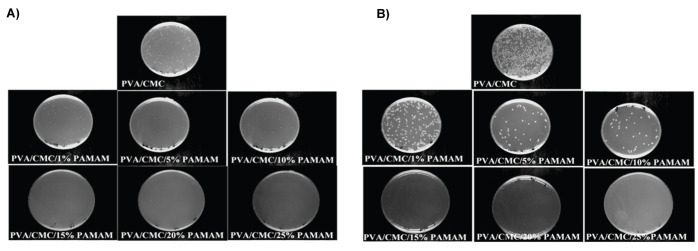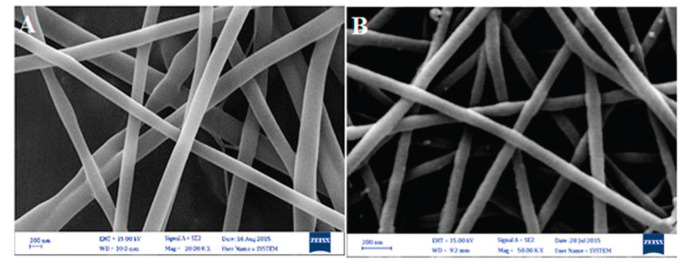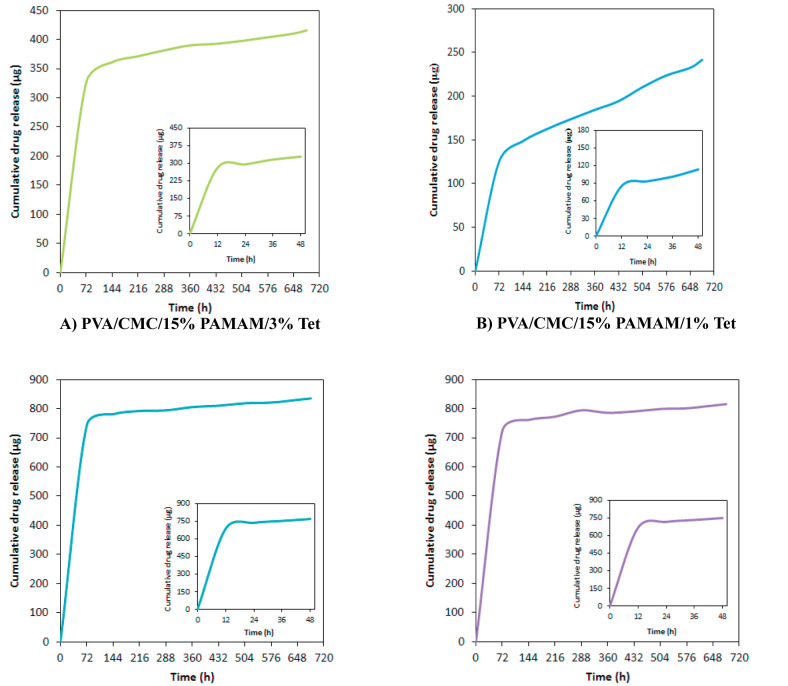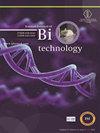树枝状聚酰胺胺电纺丝纳米纤维的制备及性能研究。
IF 1.5
4区 生物学
Q4 BIOTECHNOLOGY & APPLIED MICROBIOLOGY
引用次数: 1
摘要
背景:伤口治疗中最常见的聚合物是天然聚合物(如多糖、蛋白质和多肽)和合成聚合物(如聚乙醇酸、聚丙烯酸、聚乳酸和聚乙烯醇),因为它们具有生物可降解性、生物相容性以及与人体已知的大分子结构相似。目的:研究聚乙烯醇(PVA)/羧甲基纤维素(CMC)/聚酰胺胺(PAMAM)/四环素(Tet)纳米纤维的静电纺丝方法。PAMAM对大肠杆菌和金黄色葡萄球菌的抑菌效果也进行了测试。材料与方法:采用场发射扫描电镜对复合纳米纤维的形貌进行了研究。利用红外光谱(FTIR)对纳米化学结构进行了表征。结果:纳米纤维在预防伤口感染时释放不同量的抗生素四环素(按重量计为1%、3%、5%和7%)。研究结果表明,所有纳米纤维最引人注目的释放发生在12小时内。结果发现,负载1%、3%和5%四环素的纳米纤维膜释放药物的时间超过28天,而负载7%四环素的纳米纤维膜释放药物的时间超过14天。结论:根据PVA/CMC/15% PAMAM/Tet的释药效果和纳米纤维表面形貌的研究结果,Tet的最佳用量为5%。傅里叶红外光谱结果表明,四环素和聚酰胺胺被成功地放置在纳米纤维中。本文章由计算机程序翻译,如有差异,请以英文原文为准。



Optimization of Dendrimer Polyamidoamin Electrospun Nanofibers: Preparation and Properties.
Background: The most common polymers in the treatment of wounds are natural (e.g., polysaccharides, proteins, and peptides) and synthetic polymers (e.g., poly-glycolic acid, polyacrylic acid, polylactic acid, and polyvinyl alcohol) due to their biodegradability, biocompatibility, and their structural resemblance to the macromolecules known to the human body. Objectives: The current study aimed to develop an electrospinning method using the nanofibers of polyvinyl alcohol (PVA)/carboxymethyl cellulose (CMC)/polyamide amine (PAMAM)/tetracycline (Tet) to cover the wound. The antibacterial effect of PAMAM was also tested against E. coli and S. aureus bacteria. Materials and Methods: The morphology of the composite nanofiber was studied by a field emission scanning electron microscope. Infrared spectroscopy (FTIR) was used to characterize the nano chemical structure. Results: Nanofibers were evaluated based on the release of different amounts of the antibiotic tetracycline (1%, 3%, 5%, and 7% by weight) while preventing wound infection. The findings indicated that the highest-profile release of all nanofibers occurred early within 12 hours. It was found that nanofiber membranes loaded with 1%, 3%, and 5% tetracycline released drugs for over 28 days, while those containing 7% tetracycline released drugs for more than 14 days. Conclusions: According to the findings related to the drug release of PVA/CMC/15% PAMAM/Tet and surface morphology of the nanofibers, the optimal amount of Tet was 5%. The results of FTIR spectroscopy indicated that the tetracycline and polyamidoamine were successfully placed in nanofibers.
求助全文
通过发布文献求助,成功后即可免费获取论文全文。
去求助
来源期刊

Iranian Journal of Biotechnology
BIOTECHNOLOGY & APPLIED MICROBIOLOGY-
CiteScore
2.60
自引率
7.70%
发文量
20
期刊介绍:
Iranian Journal of Biotechnology (IJB) is published quarterly by the National Institute of Genetic Engineering and Biotechnology. IJB publishes original scientific research papers in the broad area of Biotechnology such as, Agriculture, Animal and Marine Sciences, Basic Sciences, Bioinformatics, Biosafety and Bioethics, Environment, Industry and Mining and Medical Sciences.
 求助内容:
求助内容: 应助结果提醒方式:
应助结果提醒方式:


